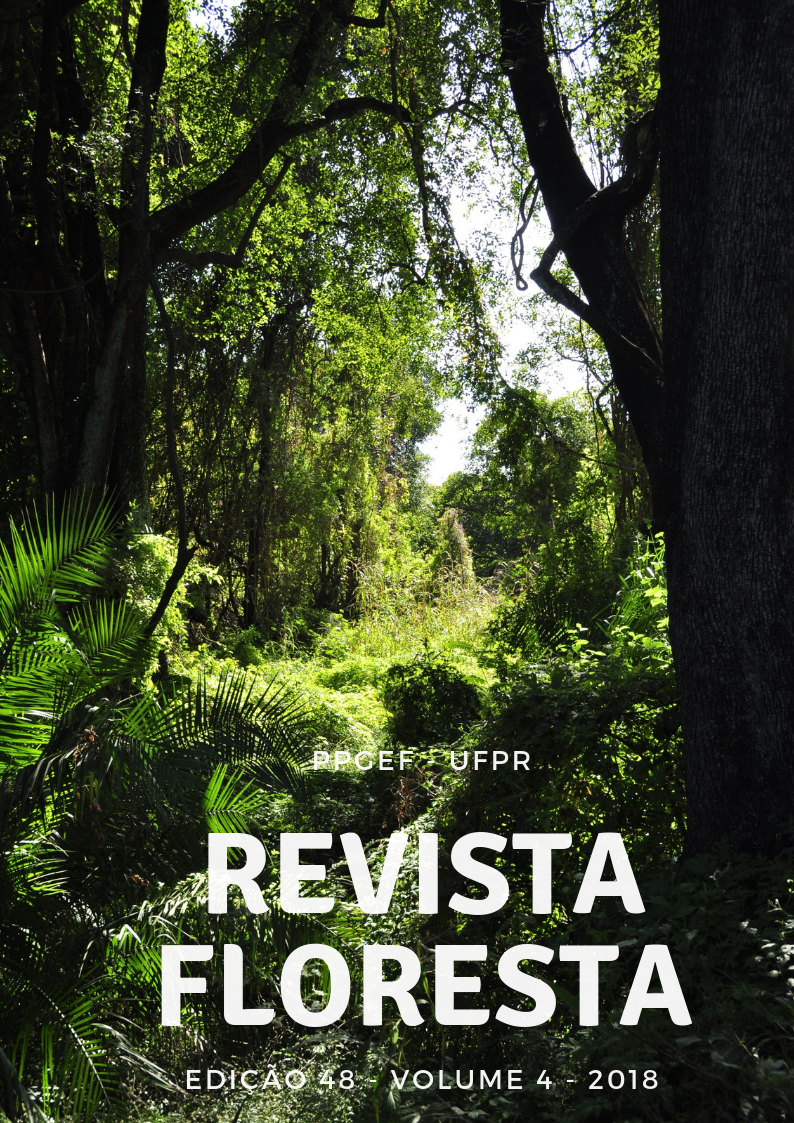PASSIVE RESTORATION OF MIXED OMBROPHILOUS FOREST A DECADE AFTER FOREST PLANTATION REMOVAL IN THE SOUTH OF BRAZIL
DOI:
https://doi.org/10.5380/rf.v48i4.55319Palavras-chave:
Riparian forest, environmental monitoring, reference ecosystemResumo
The objective of this study was to evaluate the floristic composition, diversity and ecological characteristics of riparian forest tree species under passive restoration a decade after removing Pinus and Eucalyptus genus forest plantations and comparing the data to a reference ecosystem. The study was conducted in a Mixed Ombrophilous Forest fragment in the municipality of Ponte Alta, state of Santa Catarina, Brazil. A total of 30 plots of 200 m² were installed, 15 in the area under passive restoration and 15 in the reference ecosystem, covering the arboreal and regenerating strata. In these areas, rarefied richness, Shannon index, Pielou evenness, floristic dissimilarity, ecological group representativeness and the tree species dispersal syndromes were evaluated. The families with the highest specific richness were: Myrtaceae (14 species) in the reference ecosystem, and Lauraceae (eight species) in the area under passive restoration. Considering the ecological indicators used and the use of the reference ecosystem, it can be considered that the passive restoration after a decade in forest succession proved to be efficient for enlarging the riparian forests in the studied area.
Downloads
Publicado
Como Citar
Edição
Seção
Licença
Direitos Autorais para artigos publicados nesta revista são do autor, com direitos de primeira publicação para a revista. Em virtude da aparecerem nesta revista de acesso público, os artigos são de uso gratuito, com atribuições próprias, em aplicações educacionais e não-comerciais.A revista, seguindo a recomendações do movimento Acesso Aberto, proporciona acesso publico a todo o seu conteudo, seguindo o principio de que tornar gratuito o acesso a pesquisas gera um maior intrcambio global de conhecimento.
Conteúdos do periódico licenciados sob uma CC BY-NC-SA 4.0



